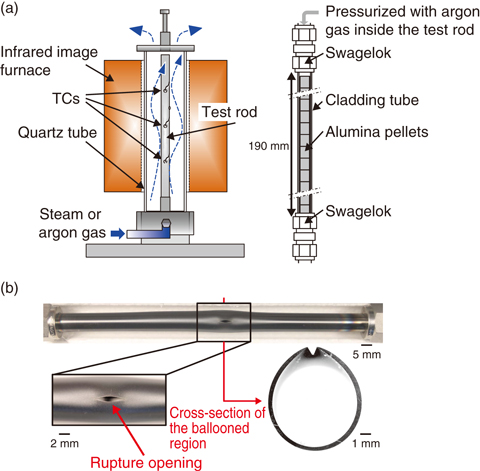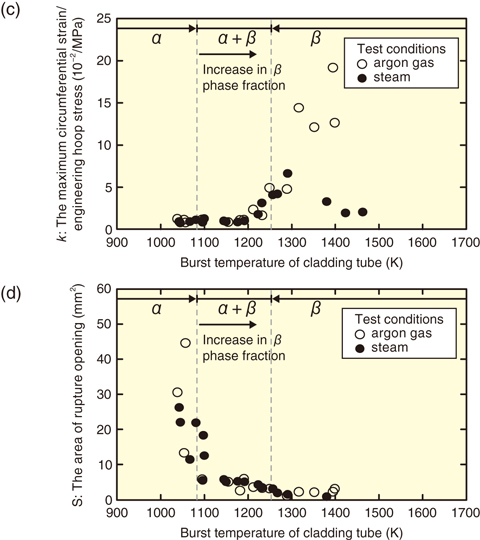
Fig.2-6 (a) A schematic of the test apparatus used for a simulated LOCA test; (b) The appearance and cross-sectional macrograph of the ballooned region of a typical post-test cladding-tube specimen

Fig.2-7 Results of burst test under simulated LOCA conditions
Loss-of-coolant accidents (LOCAs), as caused by breaks in the primary piping or the like, are considered in the safety design of nuclear power plants. When the fuel-rod temperature reaches a certain value owing to a decrease in the core-water level during a LOCA, fuel cladding may balloon and rupture because of a decrease in cladding mechanical strength and an increase in the rod-internal pressure. In addition, fuel-fragmentation, -relocation, and -dispersal (FFRD) phenomena have been observed in several LOCA experiments on very high-burnup fuels conducted recently in European test facilities. Fragmented fuel pellets, which may possibly accumulate inside or outside of a ballooned region of fuel cladding, may deteriorate the coolable geometry of the reactor core during a LOCA. These fuel-pellet behaviors are thought to be greatly influenced by the ballooning and rupture behaviors of the cladding tube, leading to FFRD phenomena. In this study, therefore, we investigated the effect of the crystal-phase condition and the oxidation of the cladding tube upon the ballooning size and rupture-opening area of this tube, which has not been well-clarified thus far.
Simulated LOCA tests were conducted on non-irradiated Zircaloy-4 cladding tubes using the test apparatus shown in Fig.2-6(a) to investigate the ballooning size and rupture-opening area of the post-test cladding tube (Fig.2-6(b)). Steam or argon gas was caused to flow outside the test rod to evaluate the effect of oxidation upon the degree of deformation of the cladding tube. Moreover, the burst temperature of the test rod was changed by controlling the internal pressure to estimate the effect of crystal-phase condition upon the amount of deformation of the cladding tube.
To eliminate the effect of the rod-internal pressure at burst, the maximum circumferential strain which was divided by the nominal stress just before the burst of cladding tube, k, tended to increase as the burst temperature approached the β-phase region (Fig.2-7(c)). In contrast, when the burst temperature reached this region, k tended to increase in the argon-gas condition and decrease in the steam condition with increasing burst temperature. These results suggest that the embrittlement of the cladding tube due to oxidation affects the ballooning and rupture behaviors of the tube in this burst-temperature region. In addition, based on the relationship between the area of the rupture opening and the burst temperature of the cladding tube, it is found that the area of the rupture opening in the α-phase region tended to be larger than that in the burst-temperature region where the β-phase existed (Fig.2-7(d)).
The results obtained in this study will be useful for evaluating the effect of burnup upon the amount of deformation and the shape of the rupture opening of a cladding tube during a LOCA.